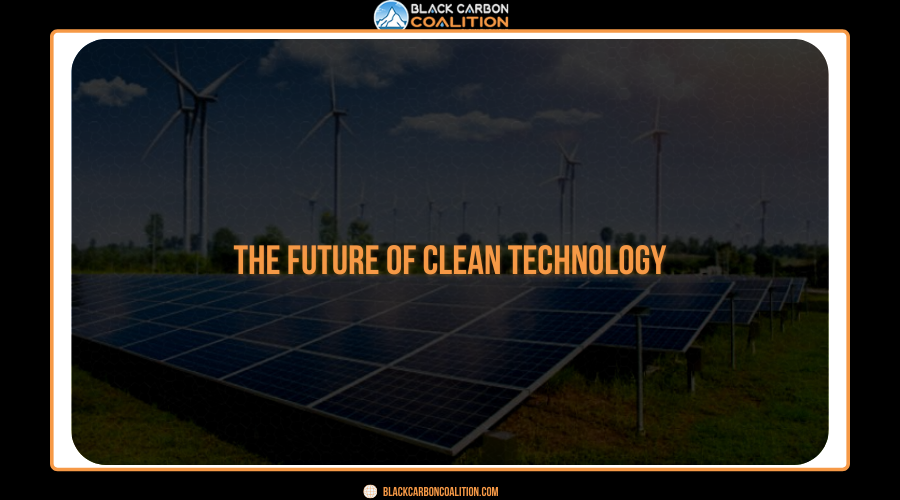The Future Of Clean Technology

The demand for clean technology
With the human population increasing and environmental concerns growing, it’s become increasingly important to promote sustainability efforts all around the world.
We’re witnessing significant shifts in our natural surroundings, so we need to act now before things get worse.
Water is running out, we’re seeing more and more species go extinct, and the planet’s average temperature is rising. Unfortunately, many of these negative changes are caused by human activity, therefore sustainable technology must be used to minimize these harmful behaviors.
By 2025, the worldwide green technology market is expected to reach 36.6 billion USD, according to a recent report. Sustainability awareness is increasing, and with it comes an increased number of people willing to act. In the future, we may expect clean tech in even more locations than we have now.
The sustainable generation
The growing concern for sustainability might be attributed to a generational shift in our society. Younger generations today are more environmentally aware and inclined to make environmentally responsible decisions.
According to a poll conducted by the USPTO, about 73 percent of Generation Z respondents are prepared to pay more for sustainable products. Gen Z is more inclined to purchase goods based on a company’s principles and environmental beliefs. Younger generations’ strong interest in environmental preservation is an indication that we may see more green technology in the future.
Clean technology trends
Clean technology has moved from an afterthought to something that is now front and center in almost every business plan and operation. Let’s look at some of the ways clean technology trends may develop in the future.
Impact investing
Impact investing is the practice of investing in firms with a positive environmental effect as well as financial gains. These impact investments are made to companies that plan to make further enhancements as a primary component of their business strategy.
The growing popularity of impact investing only adds to the push for cleaner technologies among firms considering them. The world is moving toward a more sustainable way of life, and cleaner technology supports this trend.
When the clean technology sector is expanding at breakneck speed, it’s only natural that investors pursue opportunities in this area. With cleaner technologies increasing, impact investment follows suit; by 2020, the impact investment industry was expected to be worth $715 billion.
Smart agriculture
Smart farming, as we briefly mentioned before, is a game-changer when it comes to reducing carbon emissions. The agricultural sector has far-reaching consequences for the planet; just the livestock industry accounts for about 44% of human-induced methane emissions.
Hydroponics is only one component of the broader smart agriculture industry. There’s a lot to digest when it comes to technology, including precision farming and artificial intelligence, which are currently being used within agriculture.
Artificial intelligence
Simulating human intelligence with complex computer software is what this system does. Artificial intelligence, which is not just used in farming, can also be utilized in a variety of other fields. AI has the potential to execute tasks with precision and efficiency, resulting in significant waste savings whether it’s in terms of resources or time.
AI has shown value in the manufacturing process, as it may automate several phases of the production process. It can also lower expenses, which may be used to reduce other forms of pollution.
Compulsory climate transparency for companies
In the United Kingdom, large businesses will be required by law to disclose all financial information regarding climate change. Expect greater disclosure from businesses regarding their environmental efforts as a result of this legislation, which takes effect April 6, 2022.
This bill is designed to help investors and enterprises understand the financial consequences of those who are involved in climate change. Companies will be unable to hide or deceive with their clean technology pledges as a result of this legislation’s passage.
COP26 impacts
Despite not yet being finished, COP26 has already had an impact on climate change strategies and pledges made by a number of nations. World leaders will address a variety of subjects at the meeting, including gender, finance, fashion and education.
The meetings of the United Nations Framework Convention on Climate Change (COP26) have produced a slew of agreements that will certainly affect us in future. Here are just a few of the outcomes that have already emerged from COP26:
Over 20 nations and financial institutions have promised to cease all overseas fossil fuel development funding.The Presidents of the United States and China, Barack Obama and Xi Jinping, have vowed to reduce global methane emissions by 30% by 2030.
Africa has set aside 6 billion dollars to adapt to the demands of climate change.
India is targeting net-zero emissions by 2030
